Professional qr code generator
If you need to quickly make a qr code with a logo and beautiful design, without statistics and registration, you can create a qr code in the usual qr code generator.
If you are interested in storing, tracking statistics and editing your QR codes, we have that too, Dynamic QR Codes, click the button and use it!
OBLIGIBLE: after creating a QR code, check it to see if it gives away the information contained in the QR code, you can check it through our special tool. QR code scanner.
What are Dynamic QR Codes, you can read THERE
You can read how to create a dynamic QR code with the help of our QR code generator THERE
Our SAS qr code management service allows you to create and use dynamic qr codes absolutely free and without restrictions, at any time of the day.
QR code link (URL)
QR code leading to a website is one of the most popular tools among different types of QR codes. With its help you can instantly go to an internet page, whether it is the official site of a company, an online store or any other online resource. This type of QR code contains a link and when you scan it, you automatically get to the necessary page. This not only simplifies interaction with clients, increasing their satisfaction, but also brings tangible benefits to the business. Applying a QR code with a web link is especially relevant for businesses, such as restaurants. If you own a restaurant and regularly update your menu, a QR code becomes an indispensable tool. Instead of printing new copies of the menu every time, it is enough to place the QR code on the tables or on the menu. Patrons will be able to scan it and immediately see the current menu on their smartphones. This not only saves resources and printing time, but also makes the process of updating the menu flexible and instantaneous. Thus, using QC codes with web links opens up new business opportunities and makes customer service more efficient and convenient.
Virtual business card (vCard)
Quar code in vCard format opens up new horizons in creating digital business cards. It's more than just a series of black and white squares: it contains key information about you, such as your name, contact details, professional headshot and social media links. Imagine that all this can now be transmitted with one instant scan from a smartphone screen or a piece of paper. In a world where every detail matters, the vCard QR code becomes a powerful means of self-expression and professional presentation. It makes the process of exchanging contact information not only more efficient, but also incredibly stylish. Whether at a business meeting or networking event, presenting your business card via Query Code highlights your innovativeness and approach to using modern technology. Using a vCard QR code not only saves time, but also helps keep your contact information up to date, making it easier to update and distribute. This is your chance to stand out, demonstrate your professionalism and make a memorable first impression. Reimagining the traditional business card, the Query Code vCard opens the door to a world of new networking opportunities.
Phone number QR code
A QC code with your phone number will be the bridge to simplified communication with potential customers. Imagine how easy and uncluttered it is for someone to scan the code and immediately get to the screen to call your number. This successful solution does away with the traditional and sometimes awkward process of exchanging contacts, where you have to punch the number into your phone manually, at the risk of getting the numbers wrong. This approach not only speeds up the process of establishing the first contact with the client, but also demonstrates your commitment to innovation and respect for the time of your interlocutor. Imagine how convenient it is - one moment and your number is already in the customer's phone, ready to call. This eliminates any barriers to communication, making your availability maximized. Using a QR code with a phone number symbolizes a new level of service, where every detail is thought out for the convenience of the client. It not only increases your chances of successful interaction, but also leaves behind a pleasant impression of how easy and simple it was to establish contact. In a world where every second counts, such innovations play an important role in building effective and trusting relationships with customers.
Email QR code
Just as a QR code for a phone number simplifies communication, a QR code for email opens up new horizons of communication with your customers and subscribers. By scanning such a code, a person gets the opportunity to quickly send you a message. It can be an inquiry, subscription to your newsletter or any other action you want to motivate them to do. All of this happens automatically and without any extra effort on the part of the user. This tool offers an excellent opportunity for businesses to deepen engagement with their audience. It allows you to quickly collect feedback, attract subscribers to your newsletters or handle support calls quickly. In addition, QR Codes can be customized to provide automatic responses to frequently asked questions, which greatly enhances the effectiveness of your communication. Using a QR code for e-mail becomes not just a convenient solution, but a strategic tool in the hands of an entrepreneur aimed at increasing customer loyalty and satisfaction. It is a demonstration of caring about the client and striving to make interaction with the brand as easy and pleasant as possible.
Simple text QR code
At first glance, text QR codes may seem like a simple tool. However, their versatility and practicality are surprising. These compact codes are a veritable treasure trove of business opportunities, from inventory management to marketing strategies. They can be used to easily communicate important product information, such as storage details or product composition. This makes QR codes an indispensable tool for optimizing logistics processes and making production more transparent to consumers. But their role is not limited to logistics. Text QR codes open a powerful channel of communication with customers for companies. Scanning a code can lead to getting a discount coupon, information about promotions or announcements of upcoming sales. This turns each QR code into a potential trigger to increase sales and strengthen the relationship with customers. The use of text QR codes as a marketing tool emphasizes their effectiveness in attracting attention and stimulating customer interest. In the digital age, they are becoming key to creating an interactive and engaging experience for consumers, contributing not only to increased sales, but also to building brand loyalty.
QR code SMS
QR codes that allow you to send SMS open new horizons for communicating with your audience. This tool turns messaging into a process that requires minimal effort. All you need to do is create a code that already contains your number and the text of the message. As soon as someone scans this code, the SMS is instantly ready to be sent. One click - and the message is already with you, including the sender's phone number, which greatly simplifies the collection of contact information. This approach is maximally convenient not only in communication with clients, but also opens wide opportunities in marketing and customer service. QR codes for SMS can become your reliable tool in organizing feedback, conducting surveys or promotions where participation implies sending a message. Using such QR codes allows you to build deeper and more effective relationships with your audience by offering them a simple and intuitive way to interact. This not only increases user engagement, but also emphasizes your focus on innovation and customer convenience.
Wi-Fi QR code
QR code for fast connection to Wi-Fi network is a real breakthrough in the field of comfort and accessibility of the Internet. Thanks to this innovation, the process of connecting to Wi-Fi becomes instantaneous and does not require users to know and enter complex passwords. This is especially true for both business and home environments. Imagine how convenient it is: you come to an office or a cafe, where a QR code is placed in a prominent place. You scan it with your smartphone and voila, you are online. You don't need to ask the staff for help or try to remember the password you've seen in passing. Such QR codes can be placed in any convenient place, making the process of connecting to the Internet simple and understandable for everyone. For business it is not only a way to show care about clients and their convenience, but also an opportunity to emphasize its orientation to innovations and modern technologies. At home, QR codes for Wi-Fi simplify the life of hosts and their guests, eliminating the need to dictate or write down the password every time.
QR code of event, activity
QR codes become a bridge to the world of events and activities, offering a unique opportunity for instant access to their details. Imagine how easy it is: one swipe of your smartphone and you are already on the event page, where all the necessary information awaits you, from the program to the ways to purchase tickets. This approach opens new horizons for organizers. By distributing QR codes through social networks, on posters or in invitations, you not only simplify the process of getting information for potential participants, but also considerably expand the audience. After all, now in order to learn more or even to register to the event, it is not necessary to enter long links or search for information in the internet - it is enough just to scan a code. Thus, QR codes for events and activities are not just a convenient tool for accessing information, they become the key to creating successful and unforgettable experiences for participants, as well as an effective promotion strategy for organizers.
WhatsApp QR code
QR Code for WhatsApp is a real boon for those who value their time and prefer instant solutions. This tool allows you to share your number in WhatsApp with one instant gesture. There is no need to manually enter your phone number: just scan the QR code and your contact will automatically appear in the other person's WhatsApp. This way of sharing contacts is ideal for quickly starting a dialog or networking. It is especially relevant at events, meetings or in business, where every second counts. Thanks to the QR code, the process of establishing contact becomes not just fast, but also extremely convenient. Use WhatsApp QR code to make communication easier and more efficient. This small step can greatly simplify the process of interaction, making it pleasant and easy for both you and your interlocutors.
QR Code Crypto
In a world where cryptocurrencies are becoming an increasingly popular means of payment, the ability to accept payments via QR code opens new horizons for your business. This method is not only convenient, but also simplifies the transaction process to the maximum. Your clients can easily transfer funds to you just by scanning a special barcode with the help of their smartphone. This approach significantly reduces the time it takes to make payments and makes the process more pleasant and less time-consuming for both you and your customers. By accepting cryptocurrency payments via QR code, you not only keep up with the times, but also provide your clients with a modern and convenient way of payment.
PayPal QR code
In the era of digital technologies, we are glad to offer you a new tool that will make the process of making payments not only easier, but also more efficient. Our QR code generator, created specifically for forming direct payment links in the PayPal system, will become a reliable assistant in managing your financial transactions. This tool is designed to make the process of receiving payments as easy as possible, making it instant and convenient for both you and your clients. By simply scanning a QR code, users will be able to make a payment directly through PayPal, bypassing unnecessary steps and waiting. Using this approach not only saves your time, but also raises the level of customer service to a new height, offering a simple and clear solution for instant financial transactions.
All about QR codes
In a world where digital innovations are constantly changing the rules of the game, QR codes act not just as a marketing tool, but as an opportunity for brands to stand out and make a statement. And now we're going to let you in on the secret of how to make these QR codes not only practical, but also part of your unique image. Welcome to the world of logo QR code generators - your new key to effective branding and connecting with your audience.
Why stop at standard QR codes when you can integrate your company's logo into them, making each scan not only a bridge to the desired information, but also a reminder of your brand? This not only strengthens your brand recognition, but also adds a piece of your uniqueness to every interaction with a QR code.
Discover how, with logo QR code generators, you can turn the ordinary action of scanning into a powerful marketing move that attracts attention and makes your brand memorable. Let your digital assistants tell your brand story, making every interaction with your audience more personal and effective.
What is a QR code?
Advantages of using QR codes for marketing:
Visual interest: QR codes add appeal to your marketing materials and web pages.
Logo Generator: Create QR codes with your company logo and colors to keep a branded look.
Customizable Data: Logo QR code generator allows you to customize the information that will be encoded in the QR code. Could be a link to your website, a digital coupon, or an embedded video.
Useful information: By including additional data in QR codes, you gain additional insights into how customers interact with your products or services.
High quality and resolution: Using a specialized tool to create a QR code with a logo guarantees high quality and clarity of the image. Thus, users get reliable access to the hidden content.
Error Correction: QR code creation tools often have an error correction feature, ensuring reliable scanning even if there is damage or dirt on the code.
Thus, using QR codes with your logo is an effective way to attract customers and give them quick access to your promotional materials or website.
QR codes are special two-dimensional square barcodes that contain encoded data. In most cases, the data stored in a QR code is a link to a website or URL. When you scan a QR code with your smartphone, you immediately access its contents. For example, you can automatically open a web browser with the desired web page. Other actions are also possible, such as saving contact information from a business card, connecting to a Wi-Fi network, and more.
Creating a QR code with embedded logo is an effective way to create professional and attractive codes. Users can use the QR code generator to add their company logo or other graphics to the QR code design. This feature allows companies to stand out from the competition and customize their marketing materials. Studies have shown that using a logo in a QR code increases engagement, as customers are more likely to scan and interact with such visually appealing content. Additionally, having a recognizable logo next to a QR code makes it easier to identify and build trust with potential customers. The proper use of logo integration in QR codes can be a valuable marketing tool to attract new customers and retain existing ones.
One common myth is that QR codes are two-dimensional barcodes. However, this is incorrect because QR codes are not made up of stripes like barcodes, but of pixels or modules. QR is short for "Quick Response," reflecting the quick access to information when a QR code is scanned.
The logo QR code generator is designed to create personalized QR codes in which a logo or image is placed in the center. This allows you to add brand identity or visual appeal to a regular barcode. Using a custom QR code with a logo makes it easier to recognize and remember the brand associated with the code, and also makes it more likely to be scanned or used. There are many applications that allow users to quickly and easily create and customize their own branded QR codes, including web-based tools, mobile apps, desktop programs and cloud-based services. Businesses can upload their logos, images and other graphics to these apps, turning plain black and white barcodes into powerful marketing materials.
The QR code was developed by Denso Wave at the request of the automotive industry, in particular Toyota, to create a secure and simple component identification system. QR code generators were originally used in industrial applications, so they had to be legible in shape and size and remain readable even if damaged or contaminated. QR codes, like other types of codes, can be read by imaging devices, such as a camera, and further processed into a digital format.
After capturing an image with a QR code containing the logo, the software performs pre-processing including alignment and cropping. This ensures that the QR code is correctly positioned in the center of the image so that it can be successfully scanned. To improve scanning accuracy, any noise or distortion in the image is removed using appropriate algorithms. Then an algorithm is applied to identify and highlight the logo in the QR code. Finally, another algorithm checks whether the QR code contains enough pixels for successful decoding according to the standard requirements of reading content from a QR code.
The software then applies compression algorithms to reduce file size while maintaining high image quality. It can also use brightness adjustment techniques to improve the readability of the information encoded in the QR code. All the data related to each pixel of the image is then encoded in binary form using specific codes defined in the QR code standard. This data can be accurately read after scanning by a device or application.
The software processes the captured image, conforming the data to the QR code format to ensure that the content can be read successfully. This process utilizes the Reed-Solomon error correction method, which is also used in the creation of audio CDs to ensure the data is read correctly even if there are small scratches on the surface. Error correction capabilities are also applied when using QR codes with a logo. These QR codes with images usually have errors in their creation, as the centered logo may overlap some of the data, and also the image may contain noise.
QR codes have become especially popular for tracking products in warehouses and other large facilities. With the logo QR code generator, companies can add branding to their QR codes, making it quick and easy to track products. With excellent error correction, QR codes can be scanned up to several meters away and even when up to 30% of the surface is damaged. In addition, the large memory capacity of QR codes allows them to store more information than other barcodes or traditional tags. For example, they can contain product descriptions, images, videos or links to websites. This makes QR codes convenient for use in a variety of applications, such as simplified payments or direct links to product pages in an online store from printed materials such as catalogs and brochures. Using a QR code generator with your logo reinforces all of these benefits by creating a unique brand identity, which increases customer trust when interacting with your business through a QR code.
With excellent error correction, allowing QR codes to be scanned even when up to 30% of the surface is damaged, and a large memory capacity compared to other barcodes, QR codes have become popular not only in the automotive industry. Modern cell phones are powerful enough to run QR code reading software, which has opened up many opportunities to use QR codes to conveniently transfer data without having to enter it into a smartphone. As a result, with the advent of smartphones and the spread of the mobile internet, the use of QR codes has become widespread.
QR codes with logos can be used to create a unique and visually appealing way to interact with the digital world. Using QR code generator tools, you can easily create your own QR codes that include your company logo or other design elements. These codes can then be placed on flyers, leaflets, business cards, banners and other materials. This allows businesses and organizations to stand out from the competition by providing information quickly and efficiently with QR code scanning technology.
Advantages of using QR codes with logos
Brand promotion: Placing QR codes with your company's logo in public places such as bus stops, shopping malls or billboards helps to increase your brand awareness among many potential customers. This can attract the attention of people who have not previously considered using your services.
Increased appeal: Incorporating an attractive logo into the QR code itself attracts the attention of passersby who might not otherwise be interested in scanning it. This approach can make interactions with your brand more attractive and memorable.
Increasing customer loyalty: QR codes with logos help strengthen the connection with customers and increase customer loyalty. When customers see your brand again in future communications or promotions, it's easier for them to remember it. This helps build long-term relationships and increase the likelihood of repeat purchases.
Ease of use: Modern QR code generators allow you to create them quickly and easily, without the need for complex design processes or costly printing. This means that businesses can easily use this technology to promote their products and services.
QR codes are a convenient marketing tool
QR codes have become ubiquitous, found on flyers, posters, magazines and other materials. These two-dimensional barcodes allow you to interact with the world using your smartphone. They enhance information about physical objects and provide digital context for marketing operations. QR codes simplify the use of mobile web services and are a creative digital tool.
- Increased brand awareness:
- Limited edition products: The company may launch a special series of products with unique QR codes leading to exclusive digital content, increasing interest in the brand.
- Cross-promotions: QR codes with the logo are placed on partners' products or as part of sponsorship events, thereby expanding the reach of the audience.
- Increased attractiveness:
- Interactive packs: Designing product packaging with a QR code that leads to an interactive game or story related to the brand intrigues consumers and encourages them to interact with the product.
- AR interactions (augmented reality): Developing mobile apps that use QR codes to trigger AR experiences, allowing consumers to "bring a product to life" right at the point of sale.
- Increasing customer loyalty:
- Loyalty and rewards: QR codes can be used in loyalty programs where customers scan the code with every purchase to accumulate bonuses or discounts.
- Personalized Content: Customers scan QR codes to access personalized content such as product recommendations based on their previous purchases.
- Discounts and coupons:
- Instant Discounts: Retailers can place QR codes in stores that offer instant discounts when scanned and purchased.
- Exclusive offers: Companies can send QR codes to targeted customer groups with exclusive offers, spurring interest in new products or services.
- Interactive advertising:
- Revitalizing advertising billboards: Billboards with QR codes that lead to videos or interactive web pages that provide a deeper dive into the advertising message.
- Interactive magazines and newspapers: Printed promotional materials with embedded QR codes that allow readers to quickly navigate to online content or stores to make purchases.
What is a QR code generator?
So, let's talk about the wonderful world of QR codes. Have you ever wondered how these small black and white squares can open before you the whole world of information? It is very simple, and that's where our hero comes into the game - the QR code generator.
Imagine a tool that turns any of your information - be it text, a link to your favorite website or even your contact details - into a small code that can be read in a second using your smartphone. It's not just convenient, it's the real magic of accessibility!
Using a generator like this is surprisingly simple. Want to share a link to your website or social media page? No problem! Enter your information and in a few moments your personal QR code will appear in front of you. And the most wonderful thing is that you can customize its appearance, adding, for example, the logo of your company to make it stand out among others.
And then everything is limited only by your imagination. Print out the code and place it anywhere you want: on business cards, advertising brochures or even on street posters. Everyone who scans such a code will instantly get access to your information. Or insert a QR code directly into your website so that every visitor can easily go to the required information or perform the required action just by pointing the camera of his device.
The QR code generator makes the process of creating these little helpers not only affordable, but also extremely effective. It's a great way to improve your marketing strategies and simplify communication with your audience, making interaction with them more dynamic and interactive.
So if you're still not using QR codes, it may be time to start. It's easy, fast, and can greatly enhance your digital presence.
In what formats can you download a QR code from us?
Let's open up a world of possibilities with QR codes, these small gateways to a huge digital world. Today I will tell you how easily and conveniently you can turn information into a QR code and choose the best format to save it. This will not only expand the boundaries of your interaction with your audience, but also add convenience to your everyday tasks.
First, let's talk about PNG, or as it is popularly known, the format for digital images. This format is ideal for those who want to save a QR code in high quality and use it on the web or on screens. Your QR codes will look great on a website, on social media or in any digital message.
If your goal is to create printed products or graphic design, then SVG is suitable for you. This vector format allows you to scale a QR code to any size without losing quality. Your brochures, business cards or posters will gain a whole new level of interaction with your audience.
For those who prefer to work with documents, there is the PDF format. It is ideal for embedding a QR code into presentations, reports or informational flyers. This format is versatile and makes it easy to print a QR code while maintaining its clarity and quality.
Finally, if you need the QR code in physical form, you can always print it out. This option is great for use in offline marketing, at events, or anywhere you want to offer people physical access to digital content.
When choosing a format for your QR code, consider the context of its use and your goals. Thanks to this variety of formats, QR codes become not just a tool for transmitting information, but a real bridge between the physical and digital worlds, making interaction more flexible and accessible.
Are QR codes protected by law? What is the licensing policy?
Let's reveal the secrets of protecting and using QR codes, these amazing helpers in the world of modern technologies. Created by the Denso Wave company, QR codes have quickly become an indispensable tool for transmitting information in a compact form. But what is the situation with their legal protection and what are the rules of their use?
The patents for the QR code technology are indeed owned by the Denso Wave company, which generously decided not to charge for the use of this invention. They have made the QR code specifications publicly available, turning them into an international standard (ISO). This means that anyone can freely use QR codes according to these standards without fear of patent infringement.
However, it is worth remembering that the term "QR code" itself is trademarked. In some cases, when you use this brand, it is advisable to indicate its affiliation with Denso Wave. However, if the QR code is used solely as a graphic element, such notification becomes optional.
An important point concerns the copyright of the QR code image itself. If the QR code was not created by you, but received through a third-party service, you may need to comply with certain conditions or even pay a usage fee, depending on the creator's policy.
Our services offer you the opportunity to create QR codes absolutely free of charge, both for personal and commercial purposes. Thus, you can integrate QR codes into your projects without worries and extra costs, making information exchange more convenient and innovative.
So, use QR codes with confidence! Thanks to the generosity of Denso Wave, this technology is open to everyone, providing limitless opportunities for creativity and communication in our digital world.
Can I create different QR codes for the same content?
Have you ever thought that it is possible to create several different QR codes that lead to the same content? Yes, it is quite possible and quite useful in certain situations. The main secret lies in the use of various data masks that make each QR code unique, even if the information encoded inside remains the same.
QR codes have the amazing ability to apply up to eight different data masks. These masks help avoid repetitive patterns in the code that would make it difficult to read. The mask is chosen to make the QR code as readable as possible, which means that multiple variations of QR codes can be created for the same message, each optimized for better readability.
However, not all QR code creation services pay enough attention to selecting the perfect mask, which can lead to the creation of codes that, although they work, may cause difficulties in scanning. This does not mean that the code is unworkable, but its efficiency may not be at its maximum.
To avoid such problems, it is important to choose proven and reliable tools for creating QR codes. After creating a code, it is recommended to test it on different devices and under different lighting to make sure it is readable and universal.
As a result, the knowledge about the possibility of creating different QR codes for the same content opens new perspectives for their use in marketing, information technologies and everyday life. This gives an opportunity to optimize codes for specific tasks and conditions of their use, making communication with the audience even more effective and convenient.
QR code with company logo/image/branding
In a world where every detail counts for branding, QR codes open new horizons for creativity and recognition of your brand. Embedding a logo, image or branding elements directly into a QR code not only draws attention to your message, but also strengthens the association with your brand.
Modern services offer convenient tools for creating such personalized QR codes. Thanks to these tools, you can easily embed your logo or any other graphic element into a QR code, making it not only functional but also aesthetically appealing. These codes are ideal for printing and can be a unique addition to your marketing materials, product packaging or promotional brochures.
It is important to remember that when designing a QR code with a logo, a balance between creativity and functionality should be observed. The logo or image should harmonize with the code without interfering with its scanning. Here are a few key points to pay attention to:
- Keeping the design simple:
- The logo or image should be simplified to basic shapes and clean lines. Complex and detailed designs may prevent QR code scanners from correctly recognizing the code.
- Limiting the number of parts:
- Small and complex details in the logo or image should be avoided. This helps prevent QR coders from being unable to distinguish important code elements from decorative logo elements.
- Contrast:
- The logo or image should have a good contrast to the background of the QR code. Ideally, the logo is in a color that contrasts with the main color of the QR code (usually black).
- Size and Position:
- It is important to choose a logo size that does not overlap a significant portion of the QR code. It is generally recommended that the logo occupies no more than 30% of the total area of the QR code.
- The logo should be placed in the center of the QR code where there is the greatest redundancy of data to minimize the risk of information loss.
- Once the logo is placed, QR code scannability testing should be done from different devices and under different lighting conditions to ensure that the code remains functional.
- Utilization of appropriate software:
- When creating a QR code with a logo, it is recommended to use a reliable software or service that is specifically designed for inserting images into QR codes and guarantees their performance.
Should QR codes be black and white?
The question whether QR codes should be exclusively in black and white has long become rhetorical. Modern technologies allow us to paint these magic gates to the world of information in the brightest colors, adding a bit of magic and creativity to them. The main secret of a successful colored QR code lies in contrast - a pronounced difference between the color of the background and the code elements, which ensures its perfect reading.
So, let's dive into the world of colored QR codes. You are not limited in the choice of palette, which opens before you boundless spaces for creativity. It is important to remember that your choice should obey one main rule: the contrast between colors should be high enough for the scanner to easily "read" the code.
Many modern services offer convenient tools for creating such QR codes, allowing you to choose colors both for the background and for the code elements themselves. This not only expands the boundaries of your creativity, but also makes the process of creating a QR code a true art.
However, with all the variety of possibilities, you should avoid too light colors for code elements on a dark background. Such experiments can make the code harder to read. It is better to stick to the tradition, choosing dark colors for the elements and light colors for the background. This approach will provide your QR code not only an attractive appearance, but also guaranteed functionality.
Colorful QR codes can be a great tool to reinforce your brand, making it more recognizable and appealing to your audience. By using corporate identity colors, you not only reinforce your brand, but also make interactions with consumers more emotional and memorable.
So, don't be afraid to experiment with color! With the right approach to contrast and choice of shades, your QR code will become not only a key to the necessary information, but also a bright accent of your brand.
- Sufficient contrast:
- Choose colors with high contrast relative to each other. A contrast similar to black on a white background will provide better scannability. Using dark colors for data (dark blue, dark green, etc.) on a light background often gives good results.
- Avoiding certain color combinations:
- Avoid color combinations with low contrast, such as light green on yellow or red on orange.
- Beware of using a combination of blue and red colors, as their combination can cause scanning problems due to the effect of chromatic aberration in the camera optics.
- Maintains readability under a variety of lighting conditions:
- Make sure the selected colors remain distinguishable in different lighting conditions, including bright sunlight and low artificial light.
- Testing on a variety of devices:
- Test scanning a QR code on different devices, as color perception may vary by camera and screen.
- Using software with autocontrast function:
- Use QR code creation software that can automatically adjust contrast to provide better readability.
- Compliance with Standards:
- Follow ISO standards for QR codes, which include recommendations for contrast and color palette.
Change QR code content (eg URL)
QR codes occupy a special place in the world of digital technologies, serving as a bridge between the physical and digital worlds. They instantly direct us to the required information with just one scan. But what to do if there is an error in these magic squares or a need to update the information?
Unfortunately, QR codes, like time capsules, store data at the time of creation and their content cannot be changed. If your QR code had a URL and it is incorrect or outdated, the only solution is to create a new QR code with the corrected data.
This means that every time the information needs to be updated, you are faced with the task of creating an entirely new QR code. This can be inconvenient, especially if the QR code has already been used in printed materials or large-scale advertising.
That is why it is extremely important to carefully check all the information you are going to encode before the QR code goes to print or is used in other materials. Even the slightest typo can turn into a serious problem.
However, not everything is so sad. There are services that offer the creation of dynamic QR codes, the information in which can be changed through an online platform without the need to create a new code. This is a great solution for those who want to keep the content of a QR code up to date without having to constantly create new codes.
In summary, QR codes are a unique tool for instant access to digital content, but they require care and attention when creating them. Always double check the data you enter and consider using dynamic QR codes for more flexible management of your content.
Disambiguation: QR code module or pixel?
When we look into a QR code, a whole world of small black and white squares, stacked in a certain order, opens before us. But what is the correct name for these elements that make up the mysterious pattern of the QR code? The answer is simple: they are called "modules".
Modules in the QR code world are basic building blocks that can be colored either black or white. Each such block carries a piece of information, together creating a coded message that can be read by our smartphones and other devices.
It is important to understand the difference between QR code modules and the pixels we see on our device screens or in digital images. A pixel is the smallest part of the image on the screen, while a module is an element of the QR code structure. This distinction is critical to properly understanding and working with QR codes.
Using the term "module" helps us speak clearly and unambiguously about the components of a QR code, emphasizing their unique role in encoding and storing data. These small modules work together to form the patterns and templates that make QR codes such powerful tools in today's world of digital communication.
So, the next time you use a QR code, remember the little modules behind this amazing technology and how they help instantly communicate valuable information to our fast-paced world.
QR code vs barcode
Why should marketers have a comprehensive comparison and understanding of QR Code vs Barcode? What are its pros and cons? Which one is the best to choose when it comes to production and business tracking?
Judging by the profits of top manufacturing giants, the manufacturing industry is thriving and shows no signs of stopping. Because of this, manufacturing plants are using new technology systems to check inventory.
As two inventory systems, QR codes and barcodes, compete for industry credibility, let's first break down the basic concepts of barcodes and their pros and cons.
In the never-ending war of QR code vs barcode, here are the following concepts that the manufacturing industry needs to know about.
QR codes and barcodes: what's the difference?
QR codes and barcodes have several differences from each other:
Format: QR codes are two-dimensional barcodes, whereas traditional barcodes are one-dimensional linear codes.
Capacity: QR codes have a much larger capacity compared to barcodes. They can store much more information, including text, URLs, contact information, and byte and kanji encoding information. Barcodes, on the other hand, usually contain only numeric values.
Scan Direction: Barcodes are typically scanned only horizontally, while QR codes can be scanned both horizontally and vertically. This makes QR codes easier to scan with smartphones or other camera-equipped devices.
Scanning capabilities: QR codes are usually decoded after scanning and can redirect scanners to web pages, websites, or provide a variety of information on different topics. Barcodes, on the other hand, simply provide a numerical value that is typically used to identify goods or products.
Error Correction: QR codes have built-in error correction, which makes them more resistant to damage and allows them to maintain high scanning speed even when partially damaged. Barcodes do not have the same error correction functionality and may be more susceptible to damage.
In general, QR codes are a more advanced and feature-rich version of barcodes. They provide more storage options and are easier to scan with smartphones and other devices.
What is a barcode?
A bar code, or barcode, is a series of parallel lines of varying widths that are used to encode and enter data into a computer system. It was invented by Norman Joseph Woodland and Bernard Silver in the 1970s and received a US patent.
Barcodes are based on the use of various combinations of thin and thick parallel lines that represent numbers, letters and other information. Black lines represent logic one "1" and white or transparent lines represent logic zero "0". The combinations of lines form unique patterns that can be read and interpreted using a scanner or special barcode reader.
Barcodes are widely used for commercial purposes to identify products, track inventory, record sales, and automate the purchasing process. They are also used in various industries such as logistics, retail, medical and manufacturing.
Using Barcodes
The manufacturing industry uses barcodes in the production of various products. They use them as a means of identifying the production batch of a product or sorting them with appropriate accessories.
This way they won't lose or replace their product during assembly.
Here are some of the famous uses of barcodes in the manufacturing and commercial industries.
Product tracking
It's no secret that shipping companies use barcodes to track their products. Since this eliminates manual entry of packages into hubs, the use of barcodes speeds up check-in times.
Because of this, manufacturing companies are using barcodes to speed up product registration and provide their customers with real-time product monitoring.
This way, they can track their product and avoid delivery delays.
Games
Before augmented reality technology was used in games, monster hunting games integrated the use of barcodes into their gameplay.
Because of this, game consoles have built-in barcode scanning technology.
Various games use barcodes in their gameplay to show players monsters and spells.
They integrate barcodes from household goods and when scanned, the corresponding monster or spell appears.
Due to its popularity, the era of monster hunting games began in the early 2000s and received positive reviews from users.
Product Check
Over the past few years, point-of-sale (POS) systems have integrated the use of barcodes into checkout and product purchases.
Because it makes it easier for the cashier to manually code the products being sold. From scanning a barcode to registering a product at the register, the convenience of barcodes has served cashiers across 4 different generations: Boomers, Millennials, Gen Y and Gen Z.
Meal tracking
One use of barcodes is to provide additional information about the food we eat through a third-party app on our phones.
By scanning the barcode provided on the app, people can see the calorie consumption and ingredients used in its preparation. This makes it easy for health-conscious people to monitor and track their food intake.
Inventory Management
Barcodes are used in inventory management. With the integrated use of POS, manufacturing and commercial industries can easily track the products they produce, purchase, and ship.
This way, companies can easily account for the products they produce and minimize the chance of lost sales and inventory drawdowns.
Minimizes employee training time
Training to work with retail outlets requires more time. In addition, companies are spending more money on sending employees to train them in basic POS operations.
To minimize the time spent by employees on training, specialists are introducing a barcode system.
This way, employees can quickly learn to scan barcodes and begin performing their assigned tasks in point-of-sale systems. Thanks to this, manufacturing companies can continue to operate and save money.
Availability of design and printing
Barcodes are generally cheap to design and print. Because of this, manufacturing companies resort to using these barcodes in their production line.
Data available within scan
Barcodes store information that is easily accessed when scanned with a scanning device. The information you see varies.
In the assembly shop, the stored data corresponds to the accessories to be assembled.
While in the POS, the data you can see is the product name, price and company name. Because of this, companies with production and commercial purposes use barcodes to automate production according to the storage scheme.
Disadvantages of using barcodes
For every action taken, there is an equivalent reaction to it. As with barcodes, while there are notable advantages, the disadvantages are also discussed.
Here are 4 notable disadvantages of barcodes that can impact companies.
Requires time to scan
Because barcodes are one-dimensional codes, scanning them takes longer than inserting them into products. Because of this, POS agents and cashiers suffer from carpal tunnel syndrome and typically experience numbness in their wrists.
Store limited information
Barcodes store limited information. Because of this, manufacturers are considering naming their products with limited characters to match other relevant information.
But since competitors are using more up-to-date information for effective product transparency, barcodes are not the best solution to use.
Can be easily copied
Barcodes are susceptible to counterfeiting. Because of this, retailers lose a significant amount of sales in a short period. Since barcodes cannot easily create unique codes, counterfeiters see the opportunity to easily duplicate and confuse people when scanning the code.
Prone to damage
Because barcodes are printed and placed on paper or plastic, they are susceptible to damage. Because of this, manufacturers compromise the ability to scan barcodes and make it difficult to sell products at the checkout.
Pros and cons of QR codes
To complete the QR code vs barcode comparison, here are the pros and cons of QR codes that manufacturers should consider.
Why a QR code is better than a barcode: pros
Can insert many types of media
QR codes are universal in nature and can contain many types of data. As long as they are within the maximum capacity, there is no problem converting them. Because of this, more and more people are using QR codes instead of regular barcodes.
Store more data
Unlike one-dimensional barcodes, QR codes store more data than the latter. Thanks to this, people can easily convert files into QR codes.
Easy to scan
QR codes are faster to scan than barcodes. With 2D features, people can scan QR codes in any orientation. Because of this, the business transaction period is shortened and can give businesses more time for more business obligations.
Great for people with low vision
Students with visual impairments may have difficulty typing long URLs. Because of this, experts are introducing QR codes as a replacement for URL encoding and making it easier for people with visual impairments by allowing them to scan the QR code and continue searching.
Minuses
Marketers are using them incorrectly.
Because some marketers are using QR codes incorrectly, people are increasingly hating QR codes. Because of this, they see QR codes as incompetent and have a negative impression of them.
As a result, people avoid them and may never want to give QR codes a chance.
People know little or nothing about them
Due to the ongoing battle between QR code and barcode, information about them is scarce. Because of this, people ignore QR codes and continue to use barcodes.
As a result, they don't see much difference between barcodes and QR codes.
Even though QR codes are given great importance in other countries, some countries seem to neglect its existence. Because of this, they hinder the development of QR code technology.
QR code vs barcode - which is better?
By comparing the pros and cons of a QR code and a barcode, we can easily appreciate their significant differences in terms of advertising productivity.
But to meet the changing needs of the manufacturing and consumer industries, QR codes have now become a reliable and more efficient data storage system.
Because of this, data monitoring and storage experts highly recommend using QR codes instead of regular barcodes.
The comparison between QR codes and barcodes may depend on the specific needs and purposes of use. However, here are a few factors that can help you choose between them:
Data storage capacity
QR codes have significantly greater data storage capacity compared to standard barcodes. This difference in data capacity is one of the main advantages of QR codes.
Standard barcodes are usually designed to encode a limited amount of information, usually between 20-30 characters. They are often used for product identification and inventory management.
At the same time, QR codes can contain much more information. Depending on the QR code version and data type, they can contain up to 7089 characters. This means that QR codes can store text, URLs, contact details, product information and more. The large capacity of a QR code makes it more flexible and useful for various business scenarios.
This ability to store more information makes QR codes attractive to marketers and businesses. They can be used to provide additional information about a product, expand contact information, provide discounts and promotions, and also make it easier for consumers to obtain a variety of information.
Due to their greater data storage capacity, QR codes have become a popular tool in marketing, advertising and logistics applications where more detailed information needs to be conveyed or interactions with clients and consumers are required.
Uniqueness
Standard barcodes are not unique in nature. In most cases, the same barcodes can be used for different products with the same code. This can create problems with counterfeiting and substitution of products, since their identification is based only on the uniqueness of the code.
QR codes, on the other hand, offer more unique features and can be created to suit the specific requirements and data of each product or object. Each QR code can contain unique data that can be linked to a specific product, asset or identifier.
Due to their uniqueness and ability to include additional data, QR codes can be used to ensure the authenticity of products and prevent counterfeiting. Companies can add information to QR codes, such as serial numbers, manufacturing data, checksums or other unique markings that help confirm the authenticity of a product.
Thus, QR codes provide safer and more reliable features for identifying and verifying the authenticity of products. They can be used to create unique identifiers for each product or item, making them a preferred choice for businesses where counterfeit protection and ensuring the authenticity of goods is important.
Scanning speed
The scanning speed of a QR code and a barcode are comparable, but QR codes have some advantages in this aspect.
QR codes have a two-dimensional orientation, which means they can be scanned in any position—horizontal, vertical, or even oblique. This makes scanning a QR code more convenient for users as they can simply point their smartphone camera at the QR code and quickly access the information.
In the case of a barcode, it has a one-dimensional orientation and requires more precise alignment for scanning. Cashiers and POS system operators often must align a barcode correctly before scanning it. In some cases, if the barcode is damaged or blurred, scanning may require several attempts.
While scan speeds are generally comparable between QR codes and barcodes, QR codes generally offer a more flexible and convenient scanning experience due to their two-dimensional nature. This makes QR codes preferred in situations where scanning is required quickly and easily, such as paying with mobile apps, getting product information, or accessing websites and promotions.
So which are better, QR codes or barcodes?
QR codes and barcodes have their own unique features and uses, and the choice between them depends on your specific business needs and goals. It is important to consider the advantages and disadvantages of each system and choose the one that best suits your specific requirements.
QR codes have higher data storage capacity, higher uniqueness and better scanning speed, as well as more flexible functions. They are ideal for situations where large amounts of information, unique identifiers, or proof of product authenticity are required.
On the other hand, barcodes are easier to use and have widespread support in the trade and retail industries. They can be more economical to produce and use for certain purposes, such as inventory management or scanning items in stores.
Ultimately, the choice between QR codes and barcodes depends on your specific business needs and goals. Companies must evaluate their data storage, uniqueness, security, and usability requirements to make an informed decision about choosing between QR codes and barcodes.
How to read / scan a QR code?
Opening doors to the world of digital information is now easier than ever thanks to QR codes. These small black and white squares filled with a unique pattern store links, texts, contacts and much more. But how can you turn these mysterious symbols back into understandable information? All you need is your mobile device's camera and a little knowledge of how to do it.
Ways of scanning QR codes
Use of mobile applications
The most common way is to download a specialized QR code reader app. Many of them are available for free in app stores such as App Store or Google Play. After installation, open the app, point the camera at the QR code, and the magic of modern technologies will do its job, instantly opening the necessary information in front of you.
Built-in functions in the camera
If you prefer minimalism, you'll love the ability to scan QR codes directly through the standard camera app on your smartphone. Most modern devices already have a built-in scanning function. Simply activate the camera, point it at the code and wait for the device to recognize it. Once recognized, a notification will appear on the screen with the information or action suggested by the QR code.
Scanning through a web browser
Finally, some web browsers on mobile devices can also read QR codes. In this case, you just need to select the QR code scanning function in the browser menu and point the camera at the code.
A few tips for successful scanning
- Make sure the QR code is clear and not damaged: Poor quality or damage may prevent successful scanning.
- Adequate lighting: Remember that good light is essential for successful scanning.
- Proper spacing: Not too close and not too far away - the ideal distance will provide the best reading.
Thus, scanning QR codes is not only a convenient way to access information, but also an opportunity to explore the world around you with your smartphone. Whether it's a business card, an advertising poster or a menu in a restaurant, QR codes make information more accessible and interaction with it more interactive.
Print QR codes (hints)
When planning to turn QR codes into keys to digital doors on your business cards, advertising flyers or any other printed materials, it is important to approach this process wisely. After all, how well the QR code is printed directly affects its usability and functionality. Let's consider some key points that will make the use of QR codes maximally effective.
Optimal size
The first thing you should pay attention to is the size. To make sure that a QR code will be easily readable from any device, its size should not be smaller than 0.6 inches (about 1.5 cm) on a side. When it comes to QR codes leading to business cards in vCard format, a size of 0.8 inches (about 2 cm) on a side is optimal. A larger size provides better scanning and code recognizability.
Background contrast
The key to successful scanning is high contrast between the background and the QR code itself. Black elements on a light background is the classic and most reliable option. Try to avoid schemes where the background is darker than the code elements, as this can make it difficult to read.
Space around the QR code
Equally important is how much free space is left around the QR code. This optical field is necessary for scanners to easily find and recognize the code among other design elements. A good rule of thumb is to leave a free zone around the QR code equal to at least 10% of its size.
By following these simple but important guidelines, you can ensure that your QR codes not only look professional and aesthetically pleasing on any printed materials, but also provide a seamless interaction with your audience. QR codes open up many communication and marketing opportunities, and the right approach to their creation and use will allow you to unlock their full potential.
What information can be stored in a QR code?
QR codes are not just black and white squares, but real treasure troves of information capable of storing data of the most diverse nature. Opening before us wide possibilities of use, QR codes can become the key to the whole world of data, which we get access to with just one scanner movement. Let's find out what treasures can be hidden in these codes.
All kinds of texts
QR codes can be your personalized carriers of text messages, notes, or any information you want to save or share. It could be a quote that inspires you or important notes that you need to have access to at your fingertips at all times.
Instantly click on links
One of the most popular functions of QR codes is the possibility to embed links to websites into them. This provides users with quick and convenient access to the required resources without the need to enter long and complicated URLs manually.
Contact information
QR codes can serve as a modern alternative to traditional business cards. By scanning such a code, you can instantly save names, addresses, phone numbers and emails to your device. This makes sharing contacts fast, easy and environmentally friendly.
Links to social media and multimedia
In the age of social media, QR codes can be your bridge to the world of YouTube, Instagram or Vkontakte, as well as provide access to image galleries, music tracks or videos. Such a QR code can become part of your personal or brand image.
Wi-Fi access
With a QR code, you can easily share your Wi-Fi network connection data, including network name, password and encryption type. This eliminates the need for a long and tedious manual data entry process.
Geographical information
Travel lovers may appreciate the possibility of including geographical coordinates, addresses or even entire routes in a QR code. This can become a great assistant in navigation and search for interesting places.
Thus, QR codes are real magic boxes capable of storing almost unlimited amount of information. It is only important to remember that not all scanners can support all types of data, that's why it is worth to make sure in advance that your content is compatible with the preferred scanning methods.
Are QR codes standardized?
QR codes, those small black and white mazes that hold the keys to digital content, are indeed subject to strict rules of standardization. Created by engineers from the Denso Wave company, they were introduced to the world not just as an innovation, but as a clearly organized system that received the approval and support of the International Organization for Standardization (ISO). This gave rise to the ISO/IEC 18004:2000 and ISO/IEC 18004:2006 standards, which still serve as the basis for all QR codes used around the world.
These standards not only describe what a QR code should look like, but also detail how all the information inside it should be organized - from the way data is encoded to the error correction mechanisms that make QR codes so resistant to damage. This means that no matter who creates a QR code - a large corporation or an ordinary user - it will work equally well and be compatible with all devices and programs designed to scan them.
Due to such universalization, QR codes have found their application in the most different spheres - from marketing and advertising to logistics and personal information. This has turned QR codes into a powerful tool in the hands of those who want to quickly and effortlessly provide access to any information in digital form.
Thus, the standardization of QR codes not only provides their compatibility and convenience of use, but also opens limitless possibilities for their application in everyday life, making this tool an integral part of the modern digital society.
What are mobile tags?
Mobile tags turn ordinary objects and surfaces into gateways to the digital world, using QR codes as bridges connecting reality to the infinite space of the Internet. Modern technologies give us a unique opportunity to "attach" information to any object - from a business card to a huge billboard on the street, making it available through one instant scan with a cell phone or tablet camera.
The word "tag" here acts as a tag or marker, like street artists leaving their mark on city walls. But instead of paint, QR codes are used - these small square patterns that can hold links, text, contacts and more, opening the door to the user to the desired information.
Mobile tags are widely used in a variety of applications, from advertising, where they help make posters and brochures interactive, to product packaging, which can tell the composition of a product, its history or even the journey from manufacturer to consumer. They are a unique tool for engaging with customers, providing them with valuable information, special offers or directing them to online resources for additional details.
The beauty of mobile tags is their versatility and ease of use. Anyone with a smartphone can instantly access the information hidden behind a QR code, whether it's a detailed product description, assembly instructions, a review video, a company's social network or an exclusive offer.
In the digital age, mobile tags open new horizons for marketers and brands, offering an effective and modern way to communicate with audiences. They make information more accessible, interactive and engaging for users, greatly expanding opportunities to interact and deepen relationships with consumers.
Can QR codes expire?
QR codes, these small gateways to the world of digital information, are truly eternal in terms of the data they contain. They are not subject to "expiration" in the literal sense of the word, as the information encoded in their structure remains unchanged throughout the entire existence of the QR code itself. In other words, as long as the QR code is visible, it can be scanned and receive the same information that was originally embedded in it.
However, the real relevance of a QR code may be in question if the content it leads to changes or becomes unavailable. This often happens when a QR code directs to a web page that has been removed, updated or moved over time. In such cases, scanning the QR code may result in a dead-end page or error message, rendering the QR code itself irrelevant.
It should also be taken into account that some services provide QR codes that work through a redirection system. This means that a QR code directs the user not directly to the target content, but through an intermediate server, which in turn points to the desired page. If such a service stops working or changes the redirection settings, the QR code will also lose its relevance.
To ensure the long-term viability of QR codes, it's important to periodically check your target resources for accessibility and relevance. If necessary, updating the information or creating a new QR code will help keep you connected with your audience, ensuring that your QR code will always open the door to relevant and accessible information.
In this context, QR codes are not just a technology, but a kind of commitment to keeping the information they provide up-to-date and accessible. Properly managing and updating the content they link to ensures that these digital keys will always reveal relevant and useful resources for the user.
Is your QR code generator free?
Let us introduce you to our QR code generator - a real gift for everyone who is looking for a simple and effective way to communicate in the digital world. And the best part is that this tool is available absolutely free of charge. We are happy to offer it to everyone who wants to use QR codes, be it for personal projects, commercial advertising or any other purposes.
Our mission is to provide an affordable and quality service that will allow everyone to disseminate information, promote goods or services and establish new connections without cost. Unlike many services, we do not set limits on usage and do not require payment for additional features, such as adding a logo to your QR code.
We appreciate the trust and support of our online community. If you find our tool useful, we would be grateful for any form of support: whether it's linking to us on your website or sharing your feedback on social networks, including Facebook, Twitter, VKontakte or Odnoklassniki. Such small gestures help us to grow and improve our service, making it even better and more convenient for all users.
We hope that our free QR code generator will become your reliable assistant in the world of digital information and you will find a lot of ways of its application for realization of your ideas and projects. Enjoy using it!
Market Trends: Analysis of Current Trends in the Use of QR Codes in Marketing
Current trends in the use of QR codes in marketing demonstrate their growing popularity and application in various industries. These codes have become an integral part of connecting online and offline marketing strategies, offering companies unique opportunities to engage with consumers.
Industries benefiting the most
- Retail and e-commerce: QR codes are used to provide additional information about products, discounts and promotions directly through customers' mobile devices.
- Food and Hospitality: Restaurants and bars are applying QR codes to digital menus, making it easier to order and pay, as well as providing contactless service.
- Transportation: Transit companies are implementing QR codes as part of e-ticketing systems, allowing passengers to use them to access schedules and services.
- Marketing and Advertising: Use to link to content, social media and video, improving customer engagement and extending brand reach.
New applications
- Optimization for SEO: Integrate QR codes with digital marketing through SEO to drive traffic to your website and increase engagement.
- Product Marketing: QR codes on the packaging provide complete information about the product, facilitating the shopping experience.
- Paperless workflows: In restaurants, QR codes are driving the shift to digital menus, reducing paper usage and improving service.
- Digitized business cards: Digitize contact data to simplify sharing and networking.
- Collect feedback and surveys: QR codes are used to simplify the process of getting feedback from customers, which helps to improve the quality of services and products.
Examples of companies successfully using QR codes:
- IKEA introduced mobile cash registers based on QR codes to simplify the purchase of bulky furniture.
- Starbucks used QR codes in advertising campaigns to promote its products.
- British Airways placed QR codes on boarding passes to speed up the check-in process.
- Coca-Cola и Nike applied dynamic QR codes to create unique marketing campaigns, offering customers a new experience with every scan.
In conclusion, the use of QR codes in marketing continues to expand, offering brands new opportunities to engage with audiences and improve customer experience. These trends and innovations reflect a global movement towards more integrated and interactive forms of marketing, where the physical and digital worlds merge to create deeper and more meaningful interactions with consumers.
QR codes have been successfully used in a variety of industries, from retail to hospitality and transportation, demonstrating their versatility and ability to adapt to different business models and marketing strategies. They offer a unique way to connect the online and offline worlds, providing consumers with convenient access to information, products and services with one quick scan.
New uses of QR codes, such as optimization for SEO, marketing a product through packaging, paperless workflows in restaurants, digitized business cards and collecting feedback and surveys, show their potential to improve the efficiency of marketing and operational processes. The use of QR codes offers companies the opportunity to deepen engagement with customers and improve their brand experience, which is a key success factor in today's competitive environment.
Case studies from companies such as IKEA, Starbucks, British Airways, Coca-Cola, and Nike demonstrate how the creative application of QC codes can significantly improve customer experience and drive brand growth. These cases emphasize the importance of innovation and adapting to new technologies in marketing and customer service strategies.
Contour
| № | Direction |
|---|---|
| 1 | Introduction to QR Codes in Marketing |
| 1.1 | History of development and basic principles of QR codes operation |
| 1.2 | Growing popularity of QR codes in digital marketing |
| 2 | Overview of current trends in the use of QR codes |
| 2.1 | Usage statistics and user preferences |
| 2.2 | Technological innovations and improvements in the creation of QR codes |
| 3 | Application of QR codes in various industries |
| 3.1 | Retail and e-commerce |
| 3.2 | Restaurant and hotel business |
| 3.3 | Health care and pharmaceuticals |
| 3.4 | Banking and financial services |
| 3.5 | Education and training |
| 4 | The greatest benefit from the use of QR codes |
| 4.1 | Improving user experience and customer interaction |
| 4.2 | Process optimization and cost reduction |
| 4.3 | Increased security and privacy |
| 5 | New ways of application of QR codes |
| 5.1 | Interactive advertising and personalized marketing |
| 5.2 | Digital business cards and networking |
| 5.3 | Integration with augmented reality and gaming elements |
| 6 | Advantages and challenges of using QR codes in marketing |
| 6.1 | Performance analysis and success metrics |
| 6.2 | Overcoming perception barriers and ensuring accessibility |
| 7 | The future of QR codes in marketing |
| 7.1 | Development projections and potential innovations |
| 7.2 | Impact on digital marketing strategies and consumer behavior |
| 8 | Conclusion: QR codes as an integral part of modern marketing |
| 9 | Frequently Asked Questions |
| 9.1 | How to create an effective campaign using QR codes? |
| 9.2 | What are the advantages of using QR codes over traditional marketing methods? |
| 9.3 | What tools are used to track the effectiveness of QR codes? |
| 9.4 | How to ensure security when using QR codes in marketing? |
| 9.5 | What new technologies can be integrated with QR codes in the future? |
Analysis on interaction with QR codes
Analyze how consumers interact with QR codes. What factors motivate them to scan a code? Are there differences in the perception of QR codes by different age groups?
Analyzing consumer interactions with QR codes reveals a number of interesting trends and motivations behind their use. The main factors motivating consumers to scan QR codes include easy access to information and promotions, as well as ease of use in the growing need for contactless solutions. These codes are a valuable marketing tool that can bridge the gap between online and offline marketing by providing an omnichannel experience to consumers.
Surveys have shown that a large majority of consumers (83%) have scanned a QR code at least once in their lifetime, and 72% have done so at least once in the past 30 days. This trend reflects the widespread adoption and acceptance of QR codes among consumers in America, with usage expected to grow in the coming years.
In terms of age groups, a study conducted for the International Journal of Commerce, Business and Management found that the majority of respondents who scanned QR codes were aged 21-30 (28.85%), followed by the 11-20 (25%) and 31-40 (21.15%) age groups. These findings emphasize that youth and young adults are more likely to use QR codes, which may reflect greater technological awareness and openness to new ways of interacting with brands.
To successfully attract different age groups, it is important to consider not only the content available through QR codes, but also the design of the codes themselves. Recommendations for QR code design include using high contrast between the foreground and background for optimal scanning, maintaining an appropriate QR code size based on location, and the ability to add a logo or image to enhance branding.
QR codes are thus a powerful tool for engaging with consumers, offering brands unique opportunities to integrate their marketing strategies into omnichannel experiences. Successful use of QR codes requires an understanding of consumer preferences and technology trends, as well as a careful approach to code design and content.
Successful companies in which QR codes played a key role
A few examples of successful marketing campaigns in which QR codes played a key role. What made these campaigns successful? What lessons can be learned?
QR codes have become a powerful tool in marketing campaigns, offering unique opportunities to engage with consumers. Here are some examples of successful campaigns in which QR codes have played a key role:
1. Spotify and the "This Is" campaign with QR codes on billboards
- What made the company successful: Spotify used QR codes on street billboards to promote its artists' playlists. Users could scan a QR code and instantly access music. This allowed Spotify to increase audience engagement and playlist listening.
- Lessons: Integrating digital content with the physical world through QR codes can greatly increase the level of engagement with audiences.
2. Nike's "Unlock Exclusive Snickers" campaign
- What made the company successful: Nike used QR codes to provide exclusive access to new releases of snickers through the Nike app. Customers could scan the codes at specific locations and stores to unlock the opportunity to purchase limited edition shoes.
- Lessons: Exclusivity and limited access through QR codes can drive demand and create excitement around a brand.
3. Pepsi's "Scan and Win" campaign
- What made the company successful: Pepsi placed QR codes on packages, inviting shoppers to scan the codes to enter a prize draw. This not only stimulated sales, but also increased customer engagement by providing added value.
- Lessons: Incorporating game elements and rewards into QR code campaigns can increase consumer engagement and brand loyalty.
4. Save Art" campaign with QR codes from museums
- What made the company successful: Several museums around the world have used QR codes next to works of art to provide visitors with additional information, audio guides and interactive materials. This has enriched the visitor experience and improved the educational value of the exhibitions.
- Lessons: Enriching the user experience by providing additional content can deepen engagement and increase audience satisfaction.
General lessons from successful QR code campaigns:
- Innovation and creativity in the use of QR codes can significantly increase consumer engagement.
- Providing value through exclusive content, rewards or improved user experience is the key to success.
- Simplicity and convenience of using QR codes contribute to their popularity among consumers.
- Integration with mobile technologies makes QR codes a powerful tool for instant access to digital resources.
These examples highlight how QR codes can become a key element in a marketing strategy, offering brands unique opportunities to create compelling and engaging campaigns.
Unsuccessful attempts when the use of QR codes did not bring the expected result
It is also useful to analyze cases when the use of QR codes did not bring the expected result. Why did these campaigns not work? What mistakes were made?
Analyzing unsuccessful attempts to use QR codes in marketing campaigns can provide valuable lessons and help to avoid similar mistakes in the future. Here are some examples when the use of QR codes did not bring the expected result and the possible reasons for their failure:
1. Inappropriate placement of QR codes
- Example: QR codes placed on billboards along fast-moving roads or on vehicles such as buses and trains.
- Why it didn't work: It was physically difficult for consumers to scan these codes because of their rapid movement or long distance.
- Errors: The possibility and convenience of scanning QR codes by users was not taken into account.
2. lack of motivation to scan
- Example: Campaigns where QR codes led to generic or uninteresting web pages, without offering exclusive content or rewards.
- Why it didn't work: Consumers didn't see enough value in scanning QR codes.
- Errors: Lack of motivation for the user and no clear benefit of code scanning.
3. technical problems
- Example: QR codes that were incorrectly generated or led to web pages that didn't work.
- Why it didn't work: Users were frustrated by their inability to access the promised content.
- Errors: Insufficient testing of QR codes before launching the campaign and poor technical support.
4. Difficulty of use
- Example: Companies that require users to download a special application to scan QR codes.
- Why it didn't work: The extra steps made it less likely that users would scan the code.
- Errors: Failure to understand the level of technology readiness and preferences of the target audience.
Lessons from unsuccessful campaigns:
- Convenience and accessibility: Make sure QR codes are easily scannable in the context of their placement.
- Value to the user: Offer a specific benefit or exclusive content that motivates scanning.
- Technical serviceability: Thoroughly test QR codes and related resources before launching a campaign.
- Ease of use: Minimize the number of steps required to access content via QR code.
The study of failed campaigns emphasizes the importance of careful planning, considering user experience and providing real value through QR codes to achieve success in marketing strategies.
Statistical data on the growth in the use of QR codes
Statistics on the growth in the use of QR codes in marketing in recent years. What are the forecasts for the future? Which countries are leading in the use of QR codes?
The use of QR codes has grown significantly in recent years, which is confirmed by the statistics for 2024. This year saw a whopping 26.95 million scans worldwide, with a 47% increase in the number of QR codes created. Dynamic QR codes, in particular, showed a 433% increase in scans compared to 2021 figures. Among the countries leading the use of QR codes, the US tops the list with 42.2% of total scans, followed by India with 16.1% and France with 6.4%.
Interest in QR codes is growing not only in the USA, but also in other countries. In India, for example, more than 9 million merchants accept payments via QR codes, and the total value of transactions through UPI (integrated payment system using QR codes) reached 5 trillion Indian rupees in June 2021. In Europe, 86.66% of smartphone users have scanned a QR code at least once in their life, and 36.4% do so at least once a week.
The use of QR codes ranges from direct payments and marketing to unique applications such as integration into food packaging and tourism. For example, in Canada, 57% of consumers scanned QR codes on food products to obtain product information, and Ecuador uses QR codes to promote its tourism industry through banana exports.
Historically, QR codes started gaining popularity again after 2017, when companies like Snapchat and Apple started integrating them into their products and services, making the scanning process much easier for users. Since then, interest in QR codes has only grown, especially in the context of the COVID-19 pandemic, which has pushed for an increase in contactless payments and other QR code-related features.
In conclusion, the growing use of QR codes in marketing and other areas emphasizes their importance as a flexible and versatile tool for businesses and consumers. Continued technological development and innovative applications promise even greater expansion of their use in the future.
Growth in the use of QR codes
- Increased interest during a pandemic: The COVID-19 pandemic greatly accelerated the adoption of QR codes as companies sought secure, contactless ways to interact with customers. In particular, restaurants and retailers began using QR codes more actively for menus, payment and loyalty.
- Usage statistics: Studies show that QR code usage has increased several times since the beginning of 2020. For example, one study from MobileIron found that 86% of users have scanned a QR code at least once.
Predictions for the future
- Continued growth: The use of QR codes is expected to continue to grow, especially in the retail, advertising, healthcare and education sectors, due to their ability to instantly connect the physical and digital worlds.
- Innovation and technological development: The emergence of new applications for QR codes, including improved personalization, integration with artificial intelligence and enhanced security, is further expanding their use.
Leading countries in the use of QR codes
- China: Is a world leader in the use of QR codes, especially in mobile payments. Platforms such as WeChat and Alipay have made QR codes an integral part of everyday life.
- India: Thanks to digitalization initiatives and the introduction of UPI (Unified Payments Interface), the use of QR codes for payments and marketing is also on the rise.
- U.S. and Europe: There has been a significant increase in the use of QR codes in marketing, retail and customer service, especially since the pandemic began.
QR codes have proven their effectiveness as a tool for deepening interaction with clients and creating multimedia content. Their universality and ease of use make QR codes an important tool in the arsenal of a modern marketer. In the future it is possible to expect further expansion of QR codes functionality and their integration into new spheres of business and everyday life.
At SAS we take privacy seriously
At SAS, we emphasize the privacy and security of your data. Our approach to processing information, including QR codes created through our web service, is based on the principles of complete transparency and respect for each user's privacy.
When you create QR codes on our website, rest assured that no information is analyzed or tracked by us. We strictly do not use QR code data for marketing purposes or any other secondary purposes. Your vCard addresses and any other data entered in the QR code generator are processed exclusively on your device. This means that no personal information is stored on our servers.
It is important to note that the image files of the generated QR codes may be briefly cached for approximately 30 seconds, but this is purely from a technical point of view and does not entail the collection or storage of personal data.
We are committed to providing you with a service that is not only easy to use, but also fully protects your privacy. If you have any questions about our security policy or would like to learn more about how we protect your information, we are always available to provide the information and support you need.
Creative examples of using QR codes in marketing
QR codes have long ago become a powerful tool in the arsenal of marketers, opening the door to unlimited opportunities for creative and effective interaction with the audience. These small but capacious "digital keys" can surprise, entertain and even inspire. Let's dive into the world of amazing marketing solutions where QR codes play a major role.
We've gathered eight inspiring examples for you, demonstrating how QR codes can transform the ordinary into the extraordinary, turning standard marketing activities into an exciting adventure for consumers. These examples will show how wide the range of QR codes application is - from advertising campaigns, product packaging, to organizing events and improving customer experience.
Imagine QR codes embedded in urban art objects that not only decorate the city, but also serve as guides to its history and culture. Or a package of your favorite coffee, scanning which opens an exclusive video clip with a master class from a barista. How about a business card that, with a single scan, adds contacts to your phone and shows the owner's portfolio?
Creative use of QR codes can attract attention to your brand, increase audience involvement and even increase customer loyalty, providing them not just information, but the whole experience of interaction with your product or service.
We hope that these examples will inspire you to new experiments and help you find unique ways of using QR codes in your marketing strategy. The possibilities are endless and we are sure that everyone will be able to find their own, special way of applying this technology to achieve their goals. Let each QR code become a small adventure for your clients!

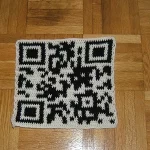
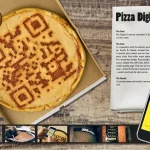
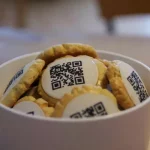
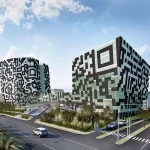
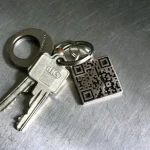

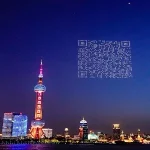
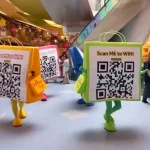
QR codes open up endless horizons for sharing information and optimizing business processes, becoming a real bridge between the real and digital worlds. In our collection of articles you will find a whole treasure trove of ideas and inspiration for creative application of QR codes in the most diverse areas. We encourage you not to stop at what has been achieved, to explore new horizons and discover unexpected ways of implementing these marvelous tools into your business.
Remember that QR codes are not just a technology, but an entire language of digital communication that allows you to easily transfer data, deepen interaction with clients and partners, and also bring innovations to familiar processes. From advertising campaigns to smart packaging, from educational programs to personal business cards, the possibilities of QR codes application are almost limitless.
We are sure that everyone will find something useful for themselves among the proposed materials, be it a businessman, a marketer, a developer or just an inquisitive person wishing to expand his horizons. Experiment, try new things, as each QR code can become a key to something more, opening the doors to the world of new opportunities and solutions. Let every scan be the beginning of a fascinating journey into the world of digital innovations!
 SAS tools Website with 1000s of useful SAS tools and calculators
SAS tools Website with 1000s of useful SAS tools and calculators 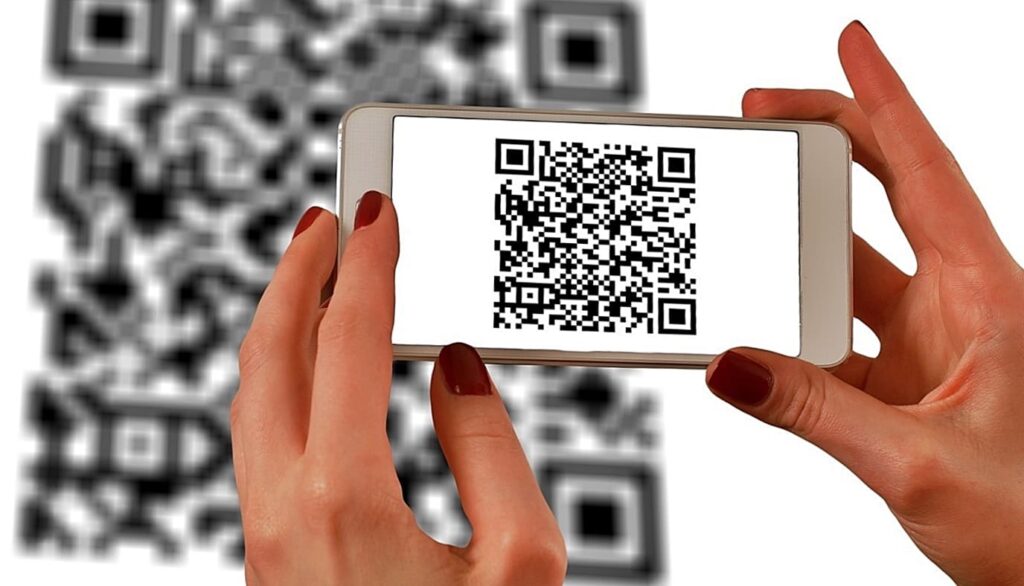
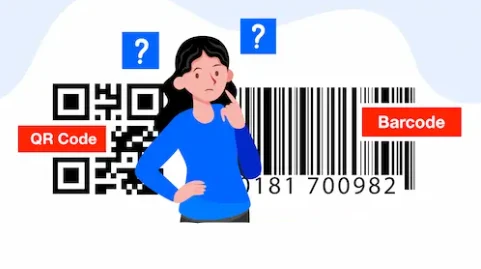
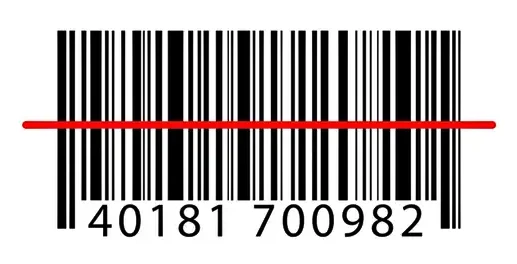

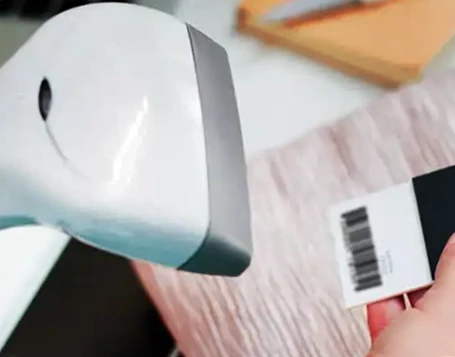
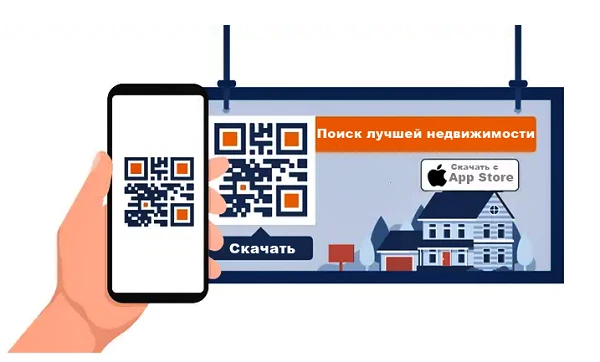
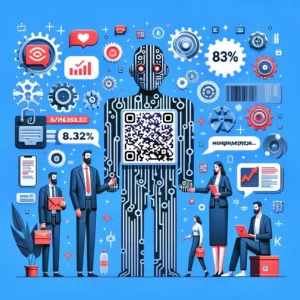
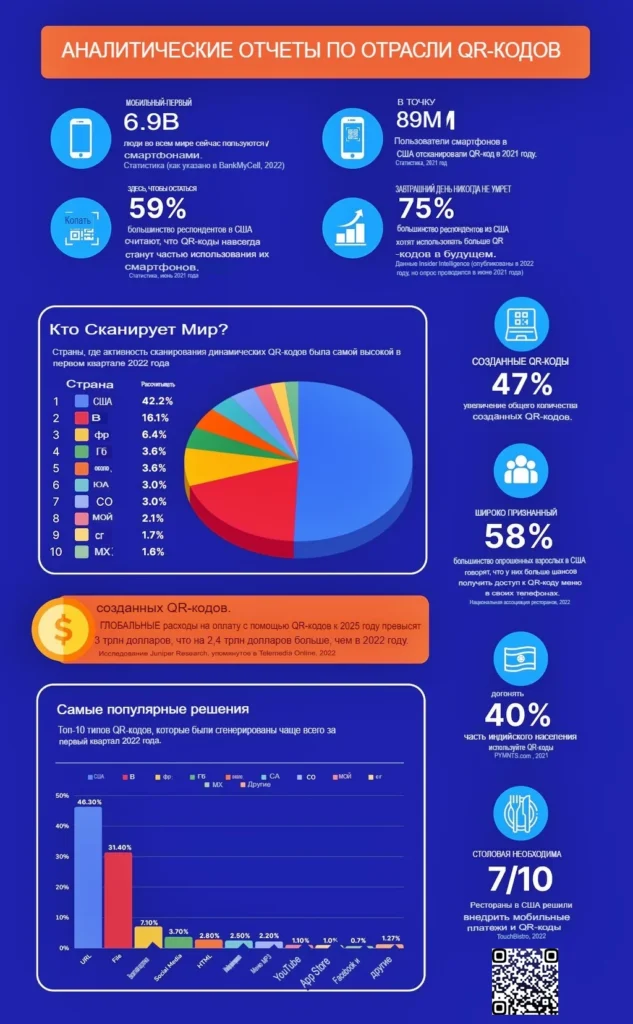
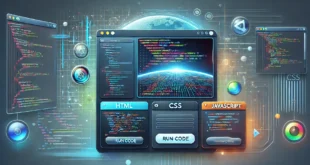

Спасибо. Очень понятный.
Отличный инструмент. Большое спасибо!
Добрый день!
Генератор QR-кодов сломался(((
Почините, пожалуйста.
Здравствуйте, все нормально мы просто обновили генератор QR-кодов, теперь он быстрей функциональней и удобней! https://www.sas.com.ru/qrkod/qr
Верните старую версию.
Это очень не удобная. Обладающая меньшим полезным функционалом.
Данная версия есть у всех, и она не пользуется популярностью.
Жаль. Придется искать на забугорках иной генератор(
—ПыСы — Ну а вдруг вернут и старую версию)) Но.. это врятли.
Здравствуйте, что именно не хватает, напишите пожалуйста, функционал практически идентичный?
В современную цифровую эпоху наличие уникального и привлекательного QR-кода имеет важное значение для того, чтобы выделиться на рынке. Благодаря этому генератору QR-кодов с интеграцией логотипов создание фирменных QR-кодов стало еще проще. Возможность легко загрузить логотип моей компании добавляет мне дополнительный профессионализм, который отличает меня от конкурентов. Будь то печатные материалы или цифровые платформы, эти специально разработанные коды значительно улучшили взаимодействие с клиентами и узнаваемость бренда моего бизнеса. Я могу с уверенностью сказать, что инвестиции в этот инструмент изменили правила игры в моих маркетинговых усилиях.
Спасибо за положительный комментарий.